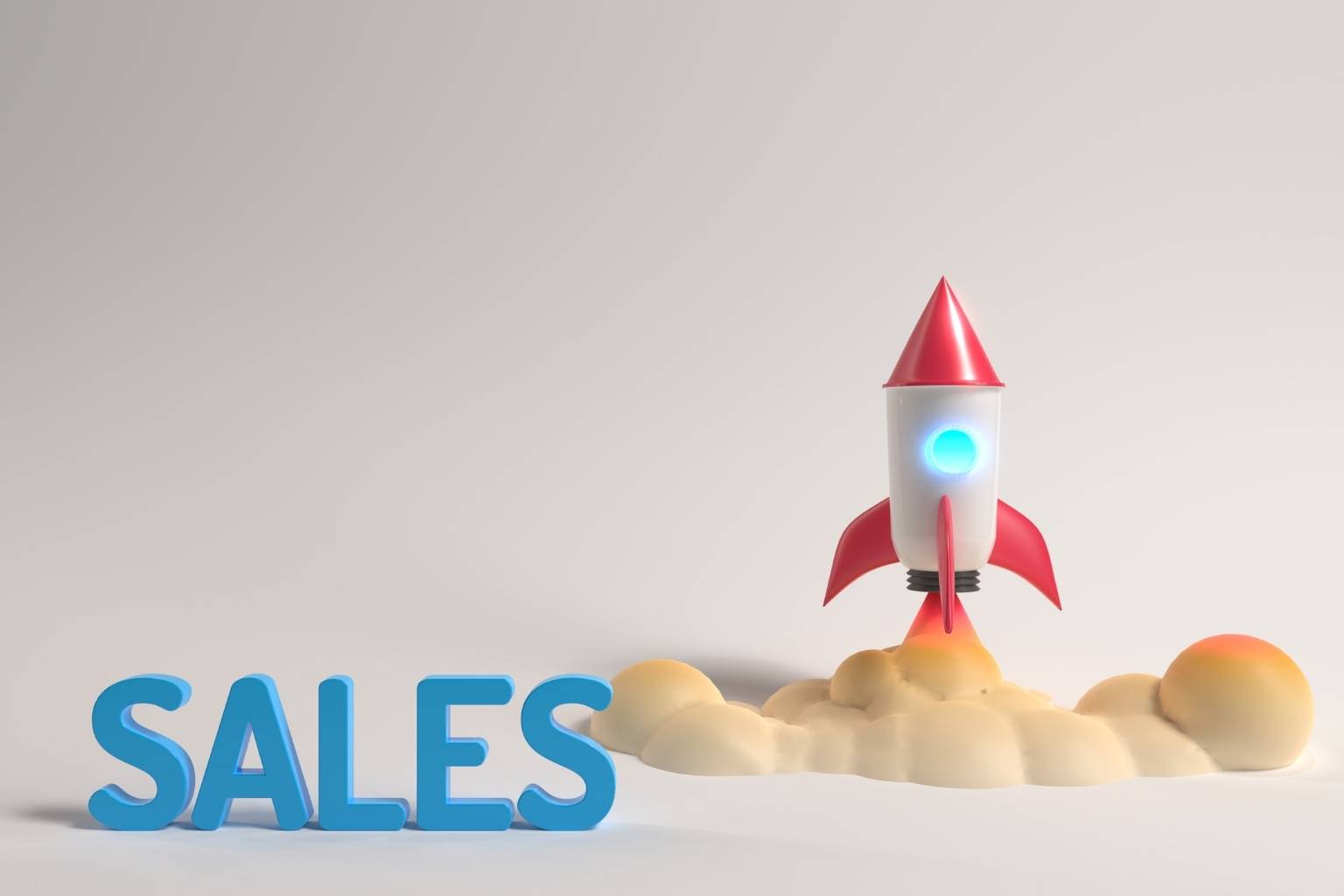
You’ve got good reps. Smart people. Motivated. But deals still die on the vine. One rep discounts too early, another oversells features that don’t land, and a third forgets to ask basic budget questions.
The problem? Everyone is selling differently, and no one is following a shared approach.
At Result Department, we help teams fix exactly this by building practical, real-world sales plays. This guide breaks down what a sales play is, why most B2B teams get it wrong, and how to build ones that your team actually uses.
What Is a Sales Play?
Here’s how it usually goes: One rep gets stuck on pricing, another rushes the demo, and a third forgets to ask a basic qualifying question. One thing is coming among them: They’re just not selling the same way.
In this case, they need sales.
A sales play is what keeps a deal from stalling out when a rep hears, “We’ll think about it.”
It’s the difference between panic and poise when a buyer says, “We’re also talking to your competitor.”
In our sales consulting work, we build these plays collaboratively, so no rep is left guessing how to move the deal forward when the pressure is on.
Sales Play vs. Process vs. Strategy: Know the Difference
These terms are often used interchangeably, but they don’t. If you want your team to be aligned and perform consistently, you need to know where each of them fits.
Here’s the breakdown:
- Sales Strategy = The Why
This is your high-level direction.
→ Who you’re selling to
→ Why they should care
→ How do you win in your market
It sets the vision for your revenue motion.

- Sales Process = The Path
This is the step-by-step flow from first touch to closed deal.
→ Discovery → Demo → Proposal → Close
It gives your team structure across the funnel.
- Sales Play = The Move in the Moment
This is what your team does at specific points in that process.
→ How to handle a pricing objection
→ How to follow up after a no-show
→ How to pitch a key feature to a CFO
Sales plays make your strategy and process usable in real-life situations.
Think of it this way:
Strategy sets the course. Process sets the structure. But plays?
Plays win or lose the deal in real time.
Without them, everything else collapses when your rep hears, “That’s too expensive,” and has no idea what to say next.
Why Sales Plays Work
Sales teams often fail due to a lack of effective sales teamwork and alignment on how to win. That’s where sales plays make a difference. When you build simple, usable plays, a few things start to happen:
- Onboarding gets faster: A new rep doesn’t have to shadow five different people to “figure it out.” They open the sales play library, find a play for early discovery, and are off.
- Messaging becomes consistent: Everyone’s pitching the same core value. Not word-for-word, but close enough that prospects hear a clear, steady message across the board.
- Deals stop slipping through cracks: There’s a play for what to do when a prospect ghosts. A play for when procurement slows things down. A play for how to explain pricing without underselling.
Here are a few simple sales play examples you might find in a fast-moving B2B team:
- Objection Handling: What to say when a buyer says, “We’re already using a competitor.”
- Discovery: Five questions to ask a technical buyer that surface urgency.
- Follow-Up: How to follow up on a stalled deal without sounding desperate.
Sales play stops the chaos. They eliminate “we thought someone else was following up” and “I didn’t know how to respond to that objection.”
When every deal starts to feel custom and random, plays restore clarity. They let everyone sell with confidence, not guesswork.
What Makes a Sales Play Work
In the last section, we talked about how sales plays help teams sell with confidence instead of guessing. But that only happens when the play itself is well-built.

An effective sales play is simple, focused, and built to be used in real time—not something reps file away and forget. Here’s what that looks like in practice:
Trigger: When to Use the Play
Example: A prospect replies to a proposal with, “We’re also reviewing a competitor.”
Why it matters: If your team doesn’t recognize the moment, they won’t know the play exists, or when to use it. Every play should start with the moment it’s designed for.
Objective: What the Rep Needs to Accomplish
Example: Shift the conversation from comparing features to highlighting why your solution solves their specific pain faster or more effectively.
Why it matters: Plays are “what to say,” and exist to move a deal forward. The objective keeps the rep focused on outcomes, not just activity.
Message Guidance: What to Say (Without a Script)
Example: Key points to hit:
- “We see this comparison a lot—what usually tips it in our favor is X.”
- “Would it help to walk through how [customer in similar space] made their decision?”
- Frame the decision around risk reduction and speed to value.
Why it matters: You’re giving your team the tools to sound like pros, not parrots. They still have room to adapt, but the message stays aligned.
Assets: What Supports the Message
Example:
- A one-page competitor comparison
- A 90-second video from a customer who switched from that exact competitor
- A short internal FAQ on handling common objections tied to this competitor
Why it matters: Don’t make reps scramble. If you have materials that help close the gap, attach them directly to the play.
Follow-Up: What Happens Next
Example:
- “Send a recap email within 2 hours, including key points covered, competitor comparison assets, and next meeting time.”
- “Update CRM with competitor named + objection type.”
Why it matters: Plays should never leave a rep thinking, “Now what?” Everyone should close with the next move spelled out, especially when roles between business development and sales are blurred or overlapping.
Once you’ve built a few strong plays, creating new ones becomes easier. Using a simple sales play template helps teams stay consistent without slowing down.
Because in high-stakes selling, clarity beats cleverness every time.
Sales Play Examples That Teams Use
The best sales play examples show up in the day-to-day moments that either move a deal forward or stall it completely.

Here are three examples we see used again and again through our B2B sales consulting work with early-stage startups and growing teams:
Play: Handling Pricing Objections
Trigger: The prospect responds, “That’s more than we were expecting,” or “We’re comparing pricing with other vendors.”
Objective: Reframe the pricing conversation around value, not cost.
Message Guidance:
- Acknowledge the concern: “Totally fair—budget matters.”
- Anchor value: “When teams choose us, it’s usually because we reduce [X time/cost/risk] within [Y timeline].”
- Ask a clarifying question: “What’s the main outcome you’re optimizing for?”
Assets:
- ROI calculator
- Case study showing value delivered within 3 months
- Short explainer deck on pricing structure
Follow-Up: Send a recap email with a pricing breakdown and value alignment points. Schedule a decision call within 48 hours.
Play: Re-Engaging a Cold Lead
Trigger: No reply from a prospect after a demo or proposal. It’s been quiet for 10+ days.
Objective:
Reopen the conversation without sounding desperate.
Message Guidance:
- Personal, direct tone: “Wanted to check in. Did we miss something holding this back?”
- Add value: “In the meantime, I thought this case study might be helpful based on where you were focused.”
- Invite a quick pulse check: “Still worth revisiting?”
Assets:
- Targeted case study
- One-slide summary of the solution
- Loom video recap of demo (if available)
Follow-Up: If you don’t hear back from us after 3 days, send a breakup email with a soft call to re-engage later. Log the lead as stalled with a reason.
Play: Selling to a Technical Buyer
Trigger: The stakeholder loop expands to include an engineer, CTO, or head of ops.
Objective: Shift the conversation from benefits to integration, security, and implementation.
Message Guidance:
- Lead with credibility: “We’ve worked with similar teams with the same concerns.”
- Preempt friction: “Here’s how we’ve handled data access, setup, and API calls in similar environments.”
- Invite questions early: “What would you want to see before feeling confident in the technical side?”
Assets:
- Integration documentation
- Security FAQ
- Engineering contact for deep dive (if needed)
Follow-Up: Log the technical contact in CRM and schedule a follow-up with the full buying committee if this contact gives the green light.
How to Build a Sales Play That Gets Used
Sales plays are only valuable if your team uses them and uses them the right way. That means they must be clear and quick to apply in real sales conversations. Here’s a simple method to build sales plays with our clients.

1. Define the Moment
What’s the exact situation the play is meant for?
→ A buyer brings up a competitor.
→ A deal has gone dark.
→ A technical stakeholder joins the call.
If you can’t name the moment, the play won’t get used, because reps won’t recognize when to use it.
2. Align on the Goal
What should the rep accomplish in that moment?
→ Reframe pricing.
→ Reopen stalled communication.
→ Build technical trust.
A good play focuses on moving the deal forward, not just on what to say but on why it matters.
3. Clarify the Message
What’s the core point your team should get across?
Don’t write a script. Outline the key themes or questions that help the rep perform well and stay aligned.
4. Equipped with Tools
What can make it easier?
→ A one-pager
→ A short explainer video
→ A case study or security doc
Drop these right into the play. Don’t expect reps to dig through shared drives.
5. Train and Reinforce
Walk through the play with your team. Use role-play or real-life examples. Then reinforce: When someone uses the play and it works, highlight it. If people stop using it, ask why and fix what’s unclear or clunky.
Sales plays become part of the culture when done right, just like your team works.
Better Sales Start with Shared Clarity
When deals fall apart, it’s easy to blame everything. But in our experience, the root issue is usually simpler: no one’s clear on how to sell in the moments that matter. Sales plays fix that by giving them a trusted shared approach.
If your team is saying the right things but still missing the mark, it might be time to start writing them down. Start small. Choose one moment that keeps tripping your reps up, and build a clear, usable sales play around it.
And if you’re unsure where to start or want to pressure-test what you’ve got, Result Department is here to help you take the guesswork out. We’re in the business of making sales work smarter.